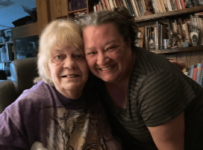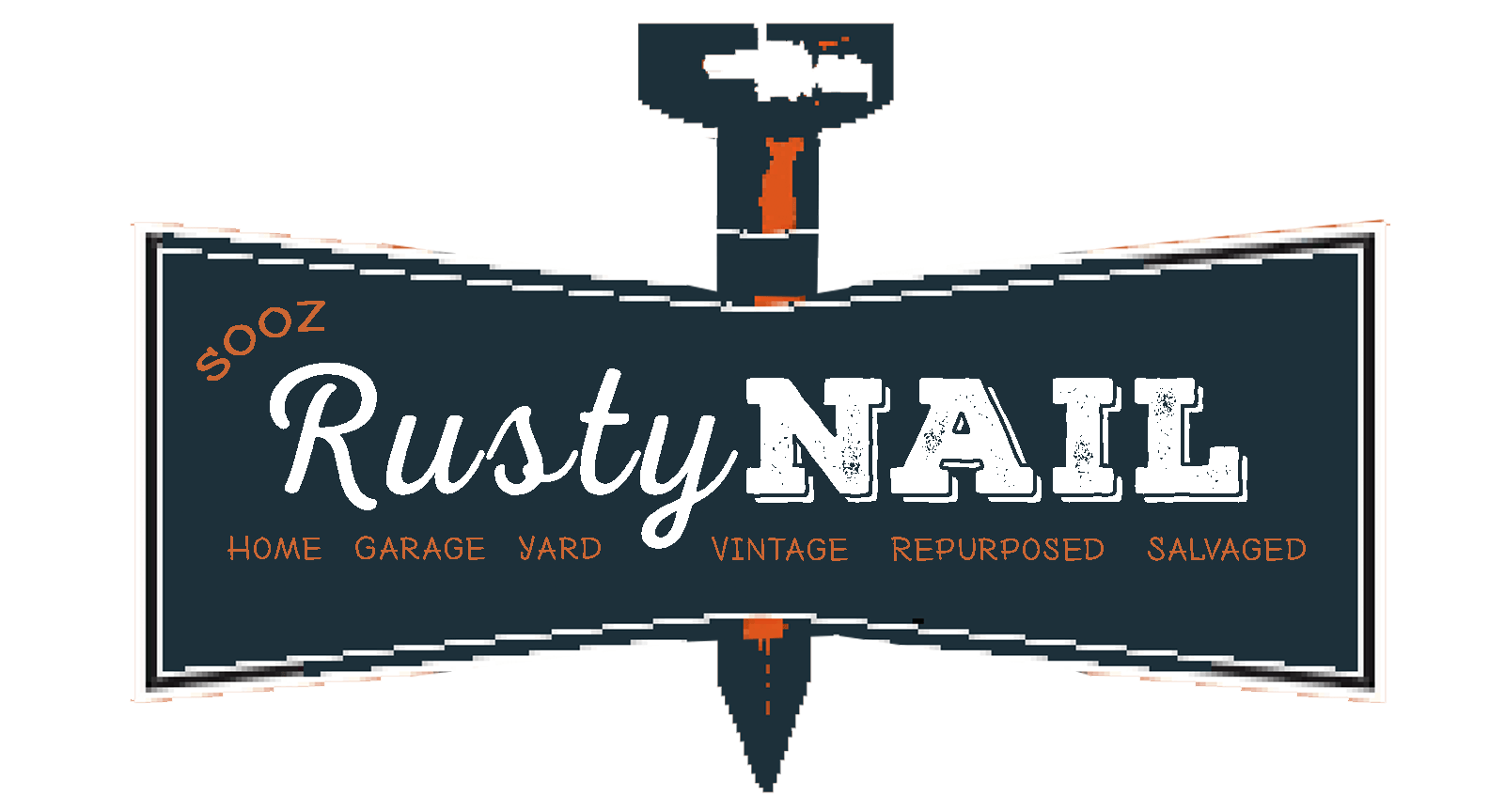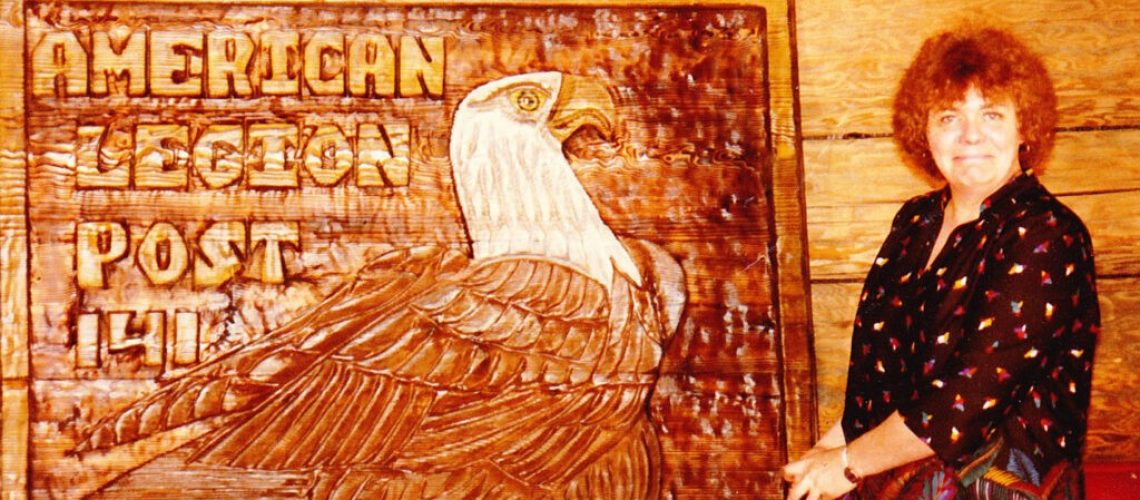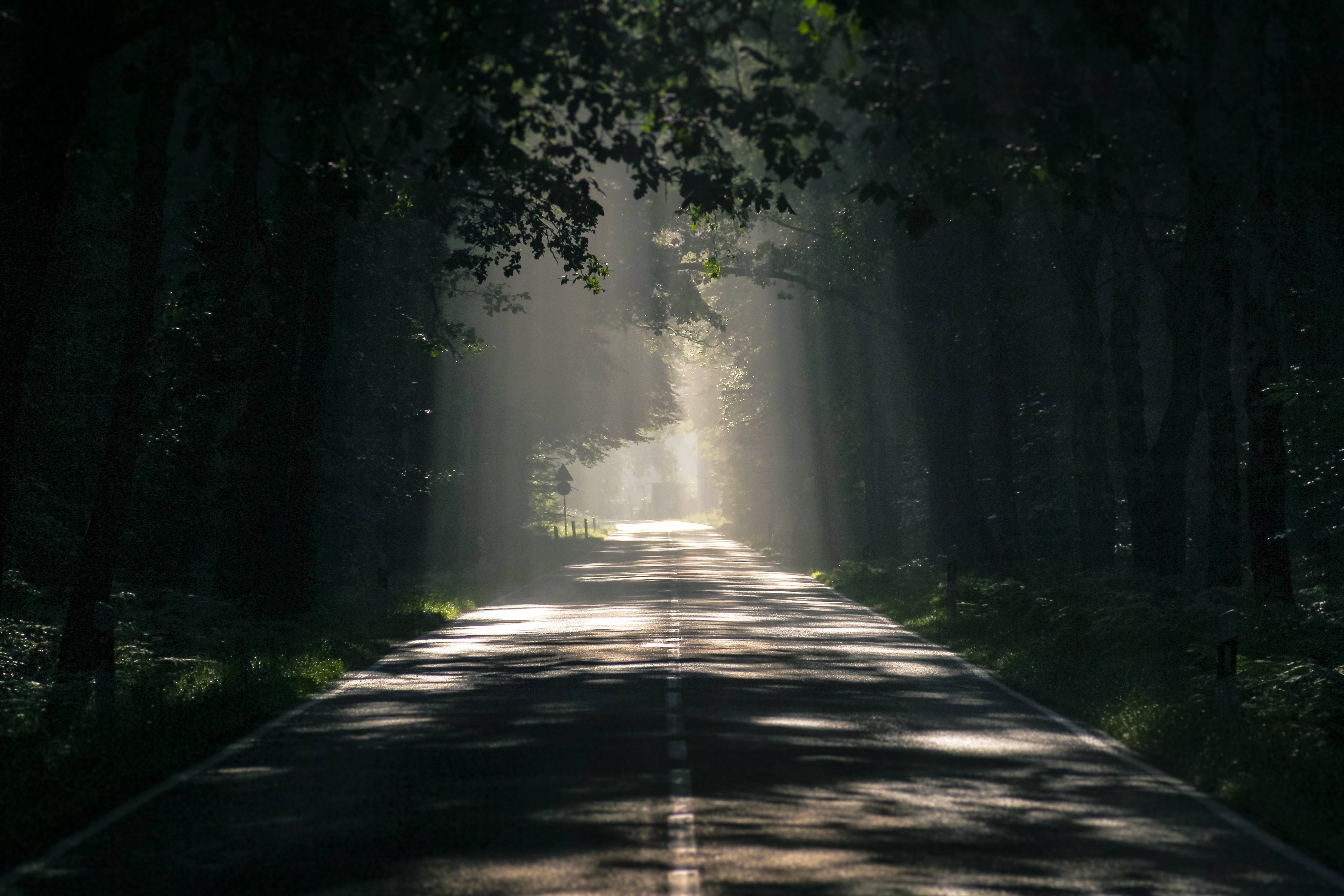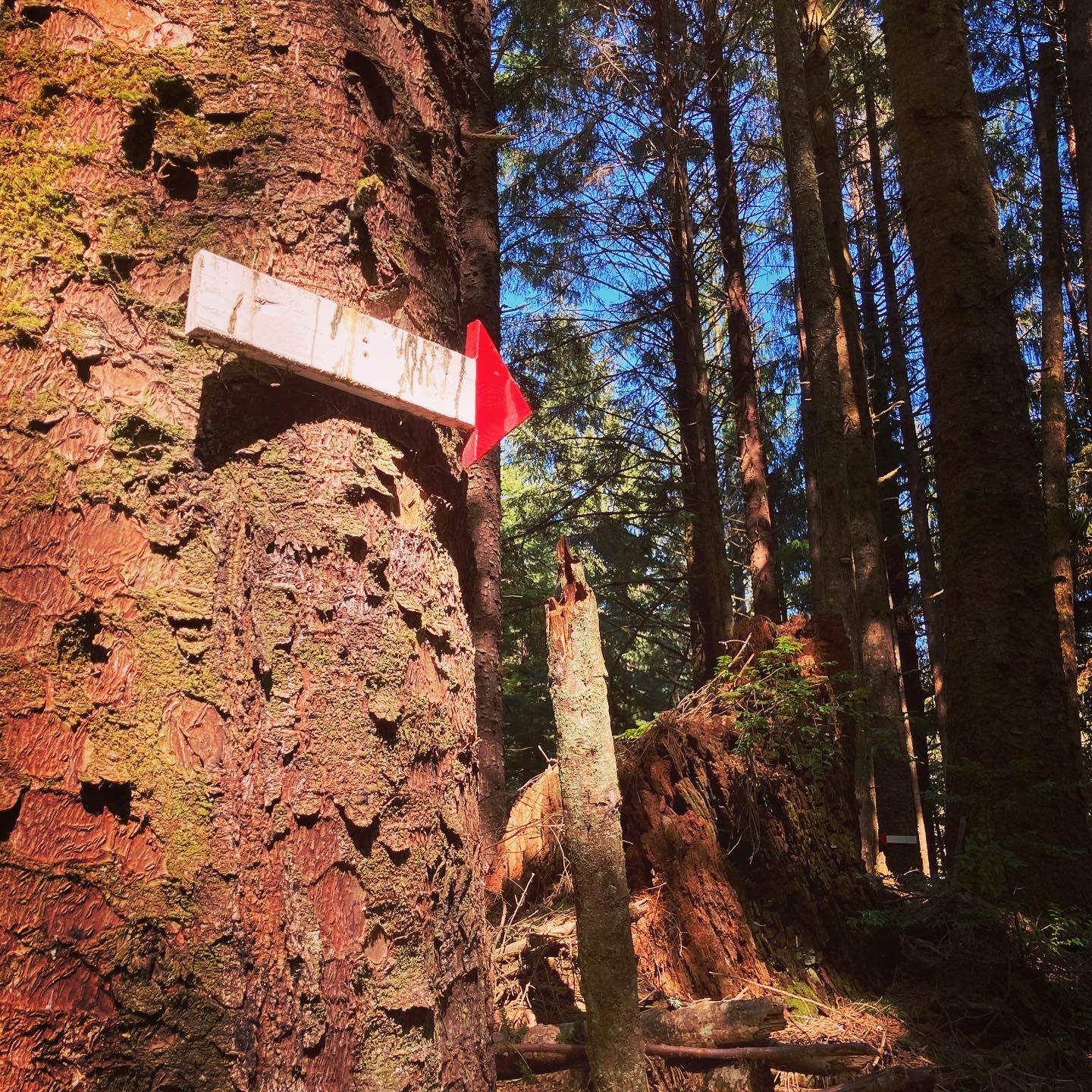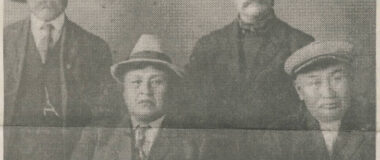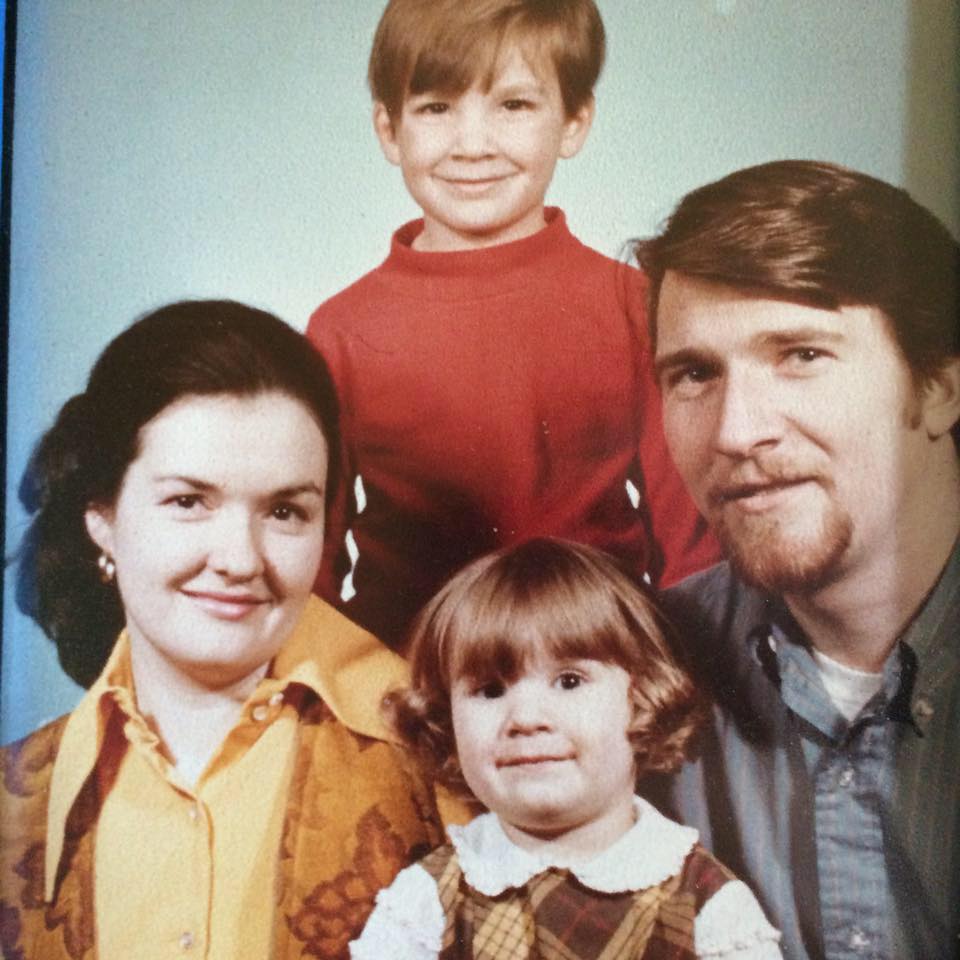
My dad, Jim Mason (1943 – 2014) was a self-taught cartoonist who practiced drawing Mickey Mouse and other characters in the margins of his homework starting in Kindergarten. Later, he put himself through graduate school as a sign painter and eventually he became one of only a handful of Art Therapists in the State of Montana.
At age five, Dad started taking me on sign painting jobs. Often he was on a ladder and I was tasked with handing up brushes, rags, and tubes of colors, or helping clean up. It was fun and from my child-eyes, what my dad did was art.
The silent impact of Judy McVay
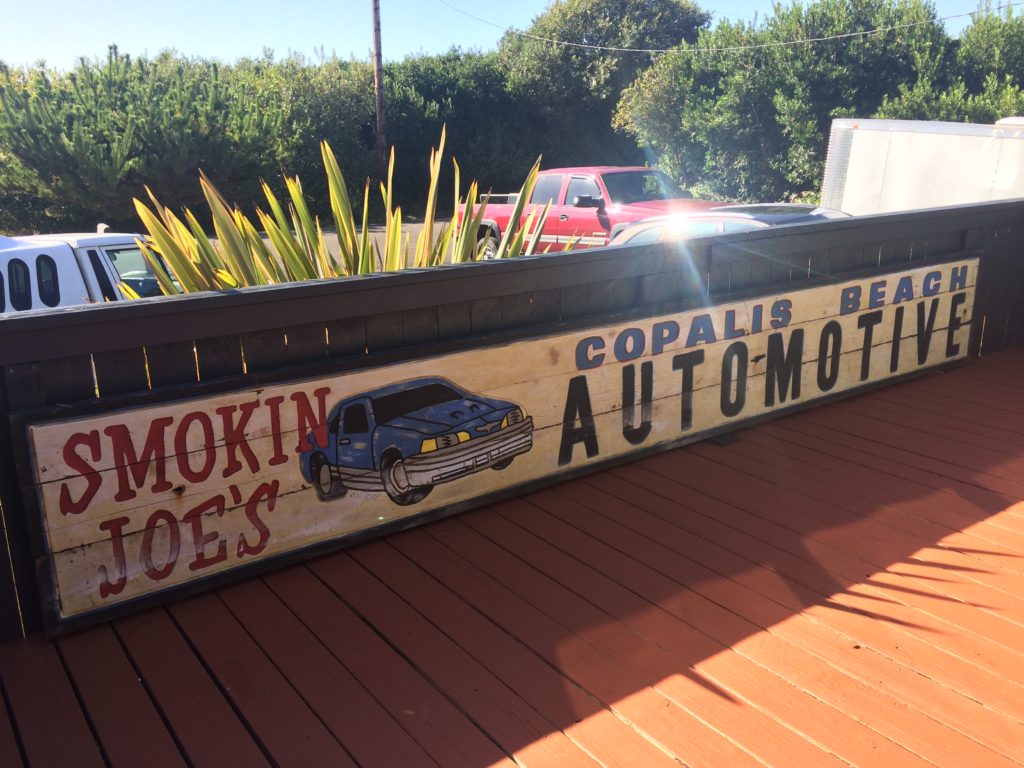
I was first introduced to Judy McVay’s work in 2018 when Sue pulled a vintage, chainsaw carved sign out of a dusty old attic in Copalis Beach. Once it was brought into the light, Sue discovered Judy’s signature. We were in disbelief! Holy heck, it was carved by a woman (in the 90s no less) and was huge, three panels 16-feet long. Luck? Divine intervention? Meant to be? We don’t know and at that time we knew nothing of Judy, which (of course) sent us on a journey to find her.
Judy who?

Since discovering the Copalis Beach sign, we’ve met and become friends with Judy and her kids including regionally famous, Steve Backus who carved our Sooz Rusty Nail sign.
In March 2020 during Covid lockdown, I built a website and published the McVay family story. But it was through hours of chatting with Judy that we learned how many signs Judy carved in the Pacific Northwest. Especially along the Hidden Coast Scenic Byway and Grays Harbor County, where Judy got her start and Whidbey Island where she had a workshop.
We’d seen her signs daily but had no idea who the artist was...
My inner five-year-old sign painter’s helper was mesmerized at the volume of Judy’s unrecognized work. How does this happen? She’s everywhere you look and nobody knows? Of course at five I didn’t realize that my dad’s work likely went unrecognized too. Turns out, what I saw as art, other people saw as the name of a restaurant or shop. Same with Judy’s signs.
The scavenger hunt of a lifetime!
For example, the Welcome to Ocean Shores sign at the gates to the city, is a Judy carved landmark and a photo-op that seemingly nobody knew anything about.
The Rain Gauge at the Lake Quinault Lodge, is an icon we’d seen since childhood that everyone assumes is tribal. In fact, the gal at the front desk told us the story of the tribe putting it up there. (Not her fault I’m sure, but that’s how history gets documented incorrectly — and really without a plaque, how would anyone know?!)
Frankly, with each sign we found, Judy McVay went unrecognized more often than not. Both Quinault and Kalaloch Lodges had no idea about theirs and neither did the Museum of the North Beach. But the Ocean Crest Resort in Moclips knows where their Judy treasures came from as do some of the other places on the map below.
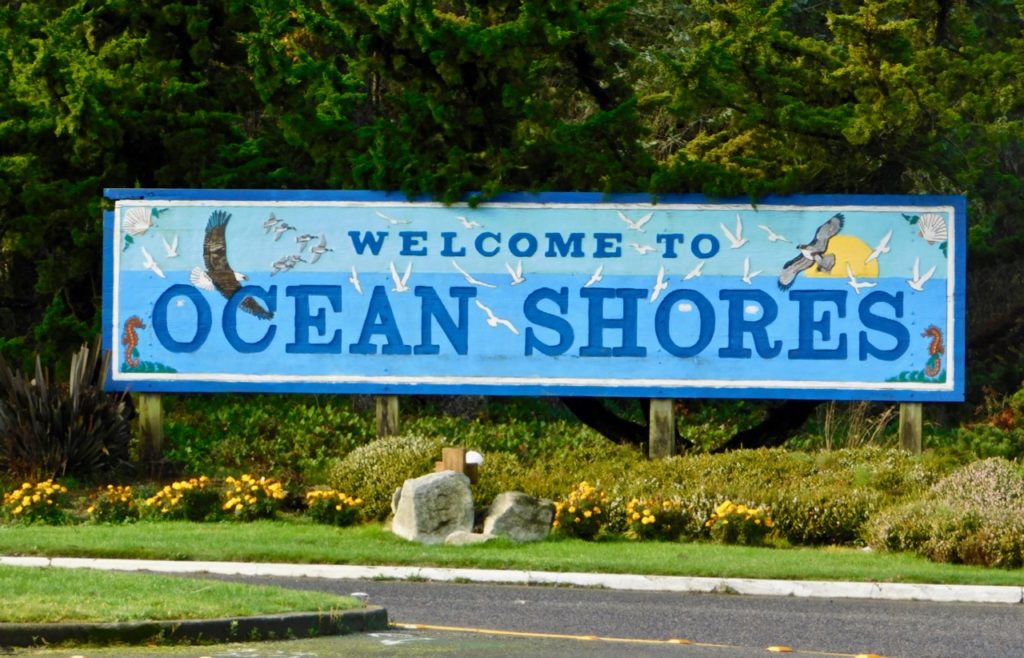
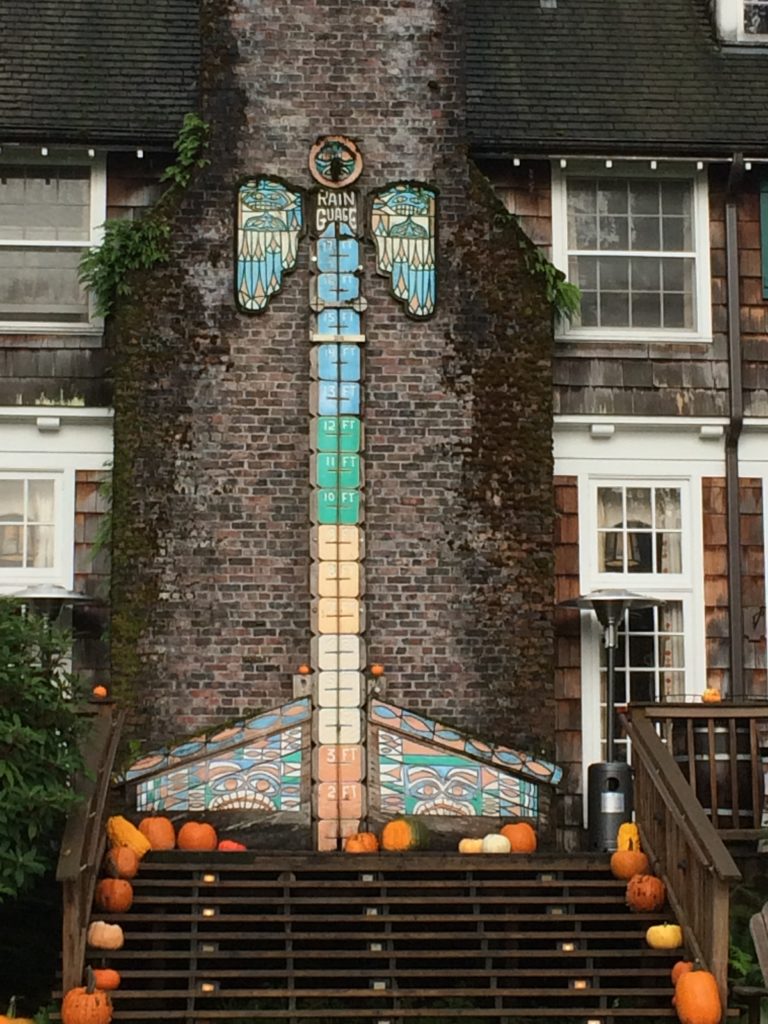
Her anonymity seemed odd considering that, in my mind, signs are art.
I mean, look at them. There’s nothing out there like them, they’re one-of-a-kind, rare commodities especially in this digital world! But somehow that was completely missed. Missed by the community, missed by the Chamber of Commerce and even by the little local museum.
But also, how does it happen that people think artwork chainsaw carved by a white woman is tribal? Was it because they were done so long ago and people forgot? Or because she’s a woman? Or maybe signs just aren’t something we think much about. Oh, ya, right… it’s the lack of plaques and storytelling.
Don’t worry, in January 2020, Sue and I made sure Judy and her Welcome to Ocean Shores sign were recognized. We rallied the folks at the local museums to put their stamp on a plaque that we placed near it. We even had a little dedication ceremony led by Sue and the Mayor gave a short speech. Unbeknownst to us at the time, that would be the one and only event in Ocean Shores for it’s 50th Birthday, thanks to the Coronavirus.
(To the millions of visitors each year who now know about Judy McVay; you are very welcome, it was our pleasure!)
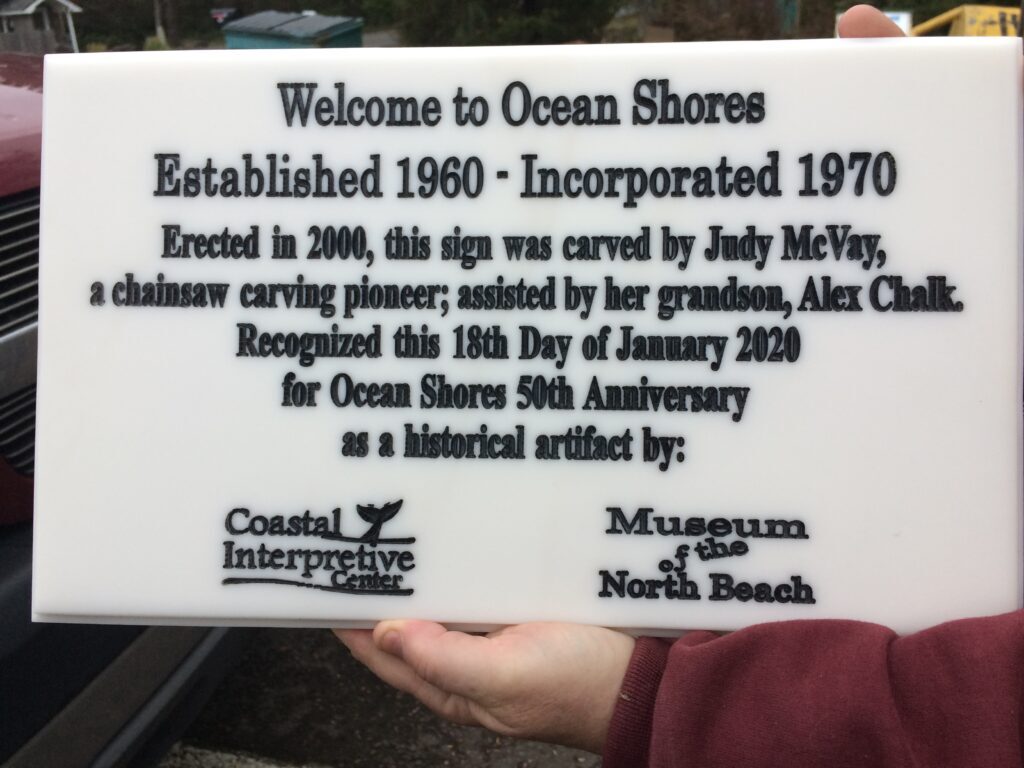
Map to Judy’s work on the Hidden Coast Scenic Byway
When I first started talking with Judy it was clear...
The volume of signs she carved is enormous. So many that it’d be literally impossible to remember them all. But in conversation, the flood gates opened and out poured her memories; oh, I did this one, and that one… the one with gold leafing, that was a challenge; and on and on until the list covered pages of my handwritten notes.
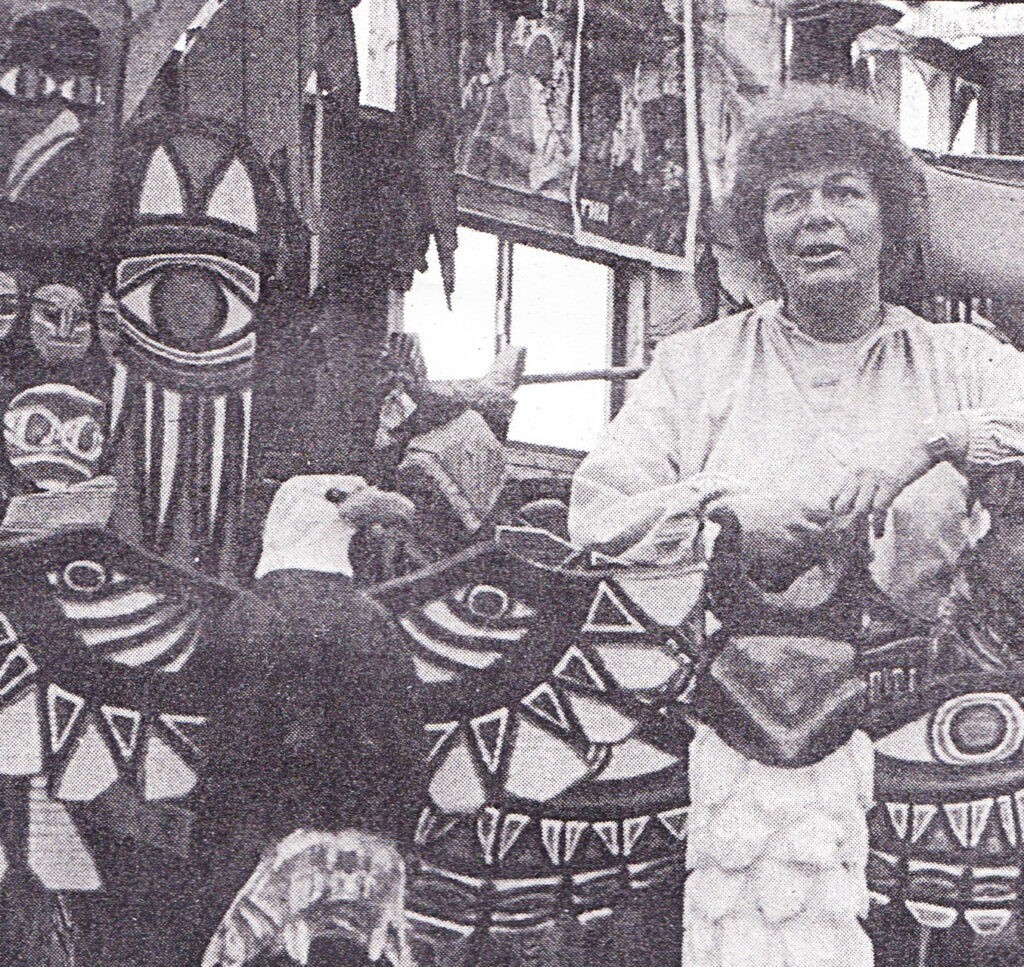
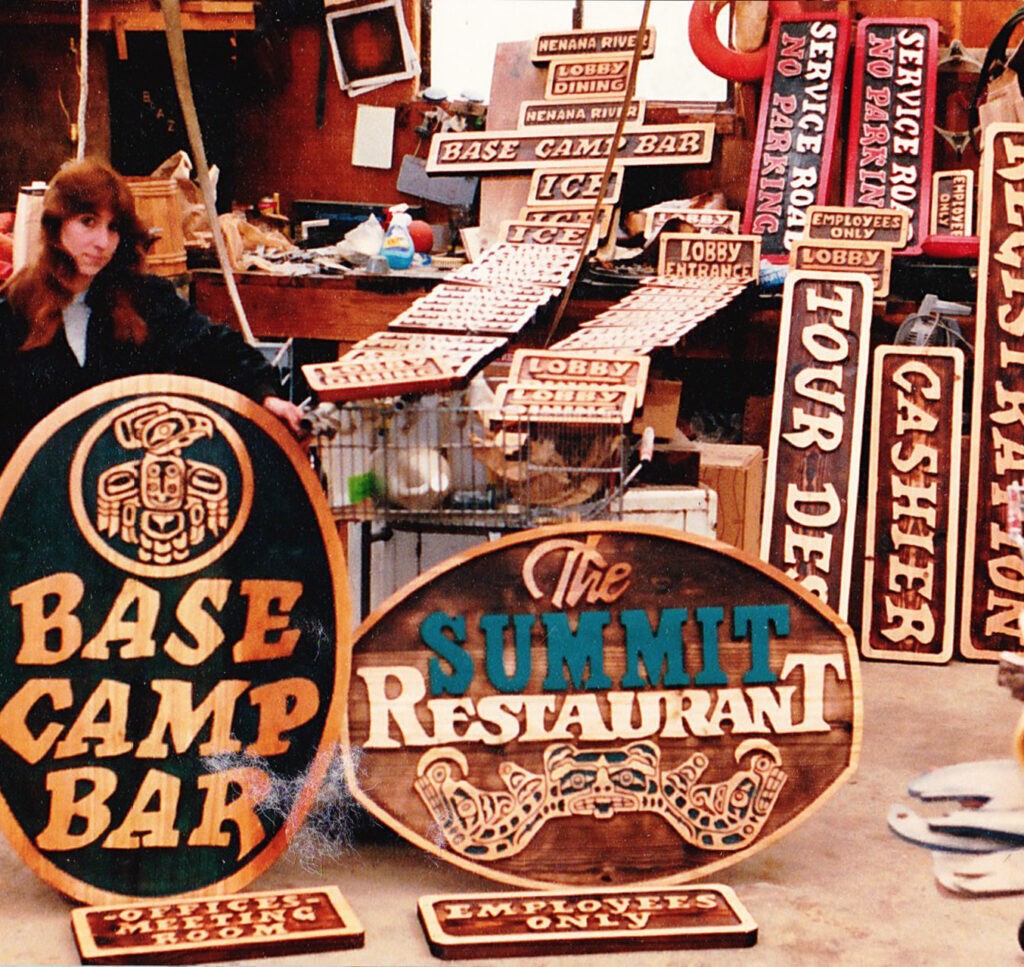
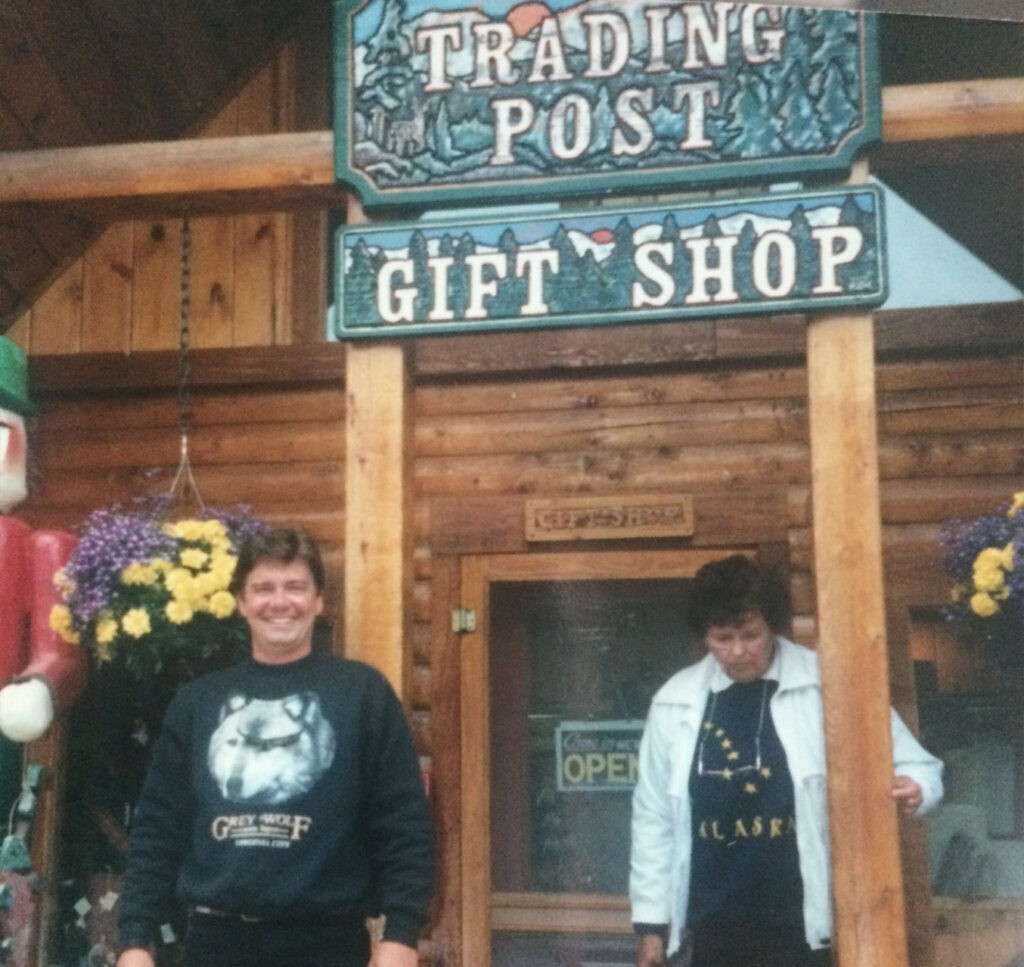
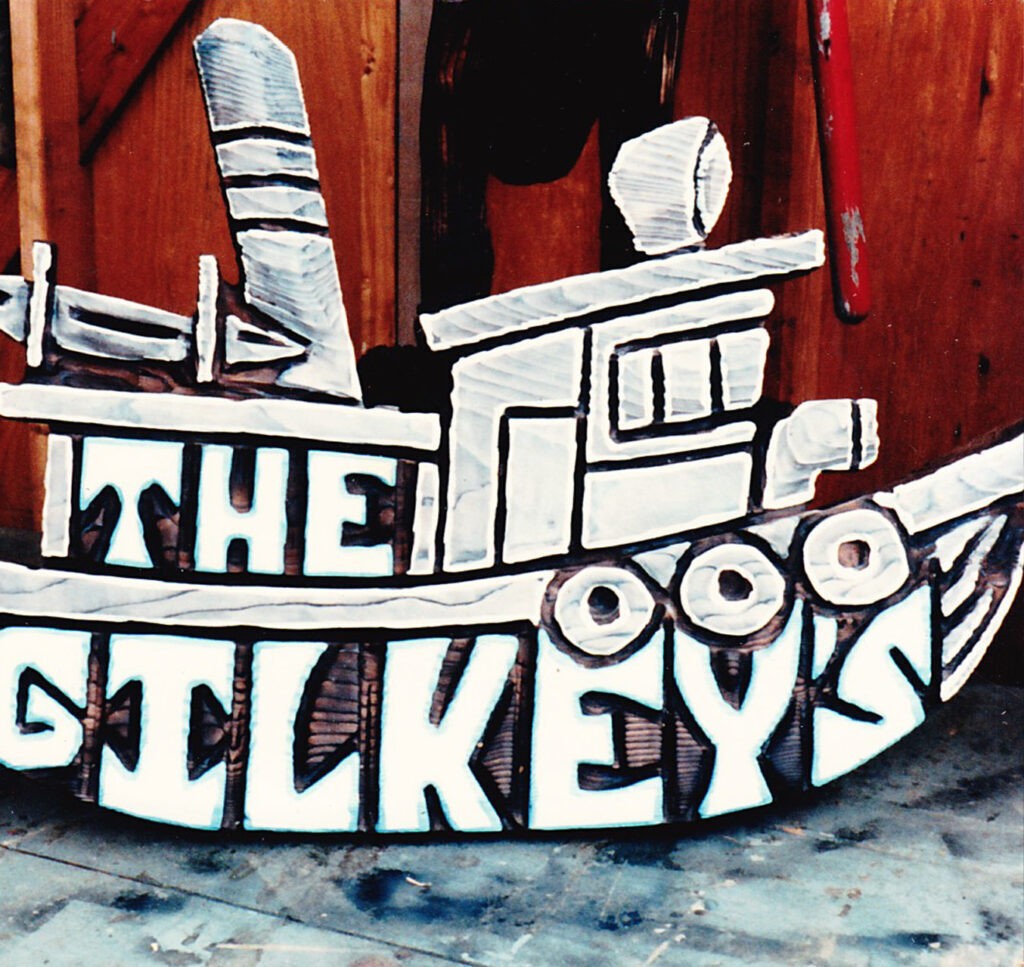
“Fourteen large murals for the Navy base, yes the Pacific Beach & Moclips Welcome but also I think I did a map there too (she did), and the Sunrise Market, Spokane Fish Hatchery, Whidbey Telecom, the video store there on the corner, some off the Arlington exit, apartment complexes, the American Legion, community centers, schools, cities, towns, stores…” I mean the list literally never ends.
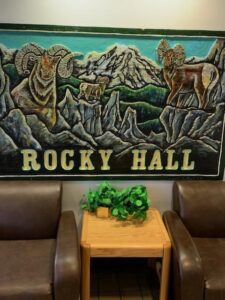
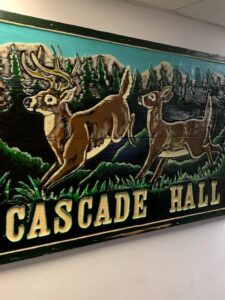
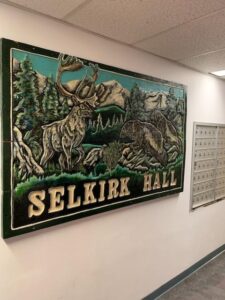

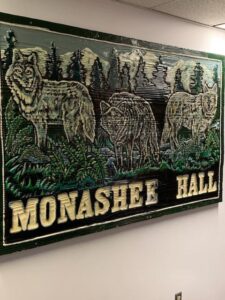

What struck me most in that moment was how integral Judy is to our daily lives and hardly anyone realizes it, brags about it, or gives it a second thought; not even Judy! To her, it was a job; a way to feed her kids as a single mom of three in the 70s, living in a depressed area. A means to an end. I never got the chance to ask him but I’m guessing, that’s how my dad saw it too. Nothin’ special.
Nothing special unless, of course, you’re five and looking up to your dad on a ladder while he’s making art. Or you’re a girl picker looking for the coolest junk on earth in scrungie attics.
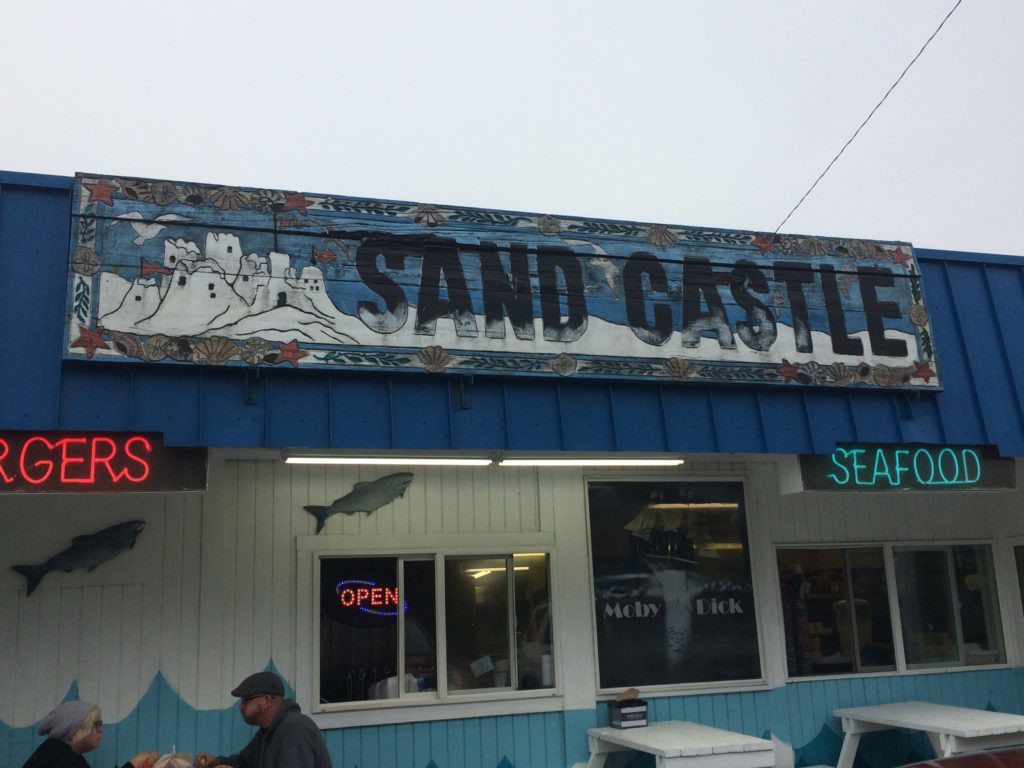
Judy McVay's place in our history
The more we scavenged for information, the more we learned and the more curious I became. Like the time we found out that Judy was the first woman in the world to compete and place in a chainsaw carving competition (1982). She also carved a totem pole that was sent by the city of Tukwilla as a gift to Japan. And made a carving for Seattle Seahawks head coach, Jack Petera (who was quite the flirt).
But to me, her signage has the biggest impact on our individual stories. They are where we turn left to go to Mom’s, or how we know we’re home, or the thing we walk past everyday on the way to school. And even though we live alongside Judy, incredibly to this day, most people are largely unaware of her contribution to the world of chainsaw carving as an art form and her place in history as the first woman to place competitively.
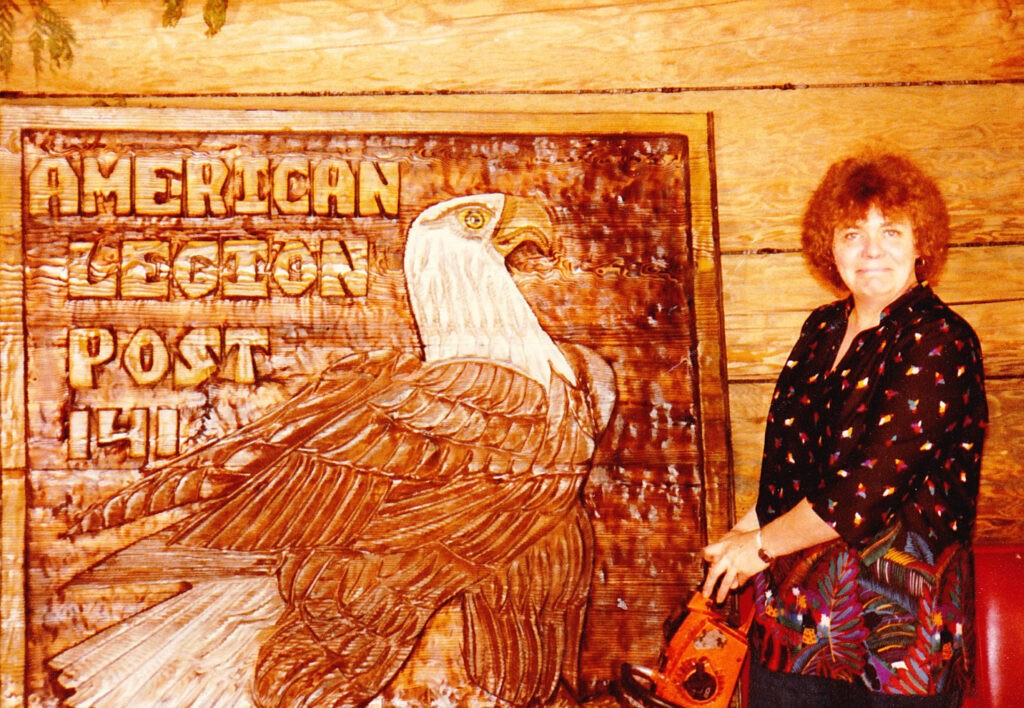
My dad died suddenly in 2014 after a very short battle with cancer. I think of him often and whether he knew it or not, he unlocked a simple idea: signs are art, which led me to meeting a pioneer in chainsaw carving, a role model, and an inspiration. Thank you, Dad.
And that's how magic friendships start.
